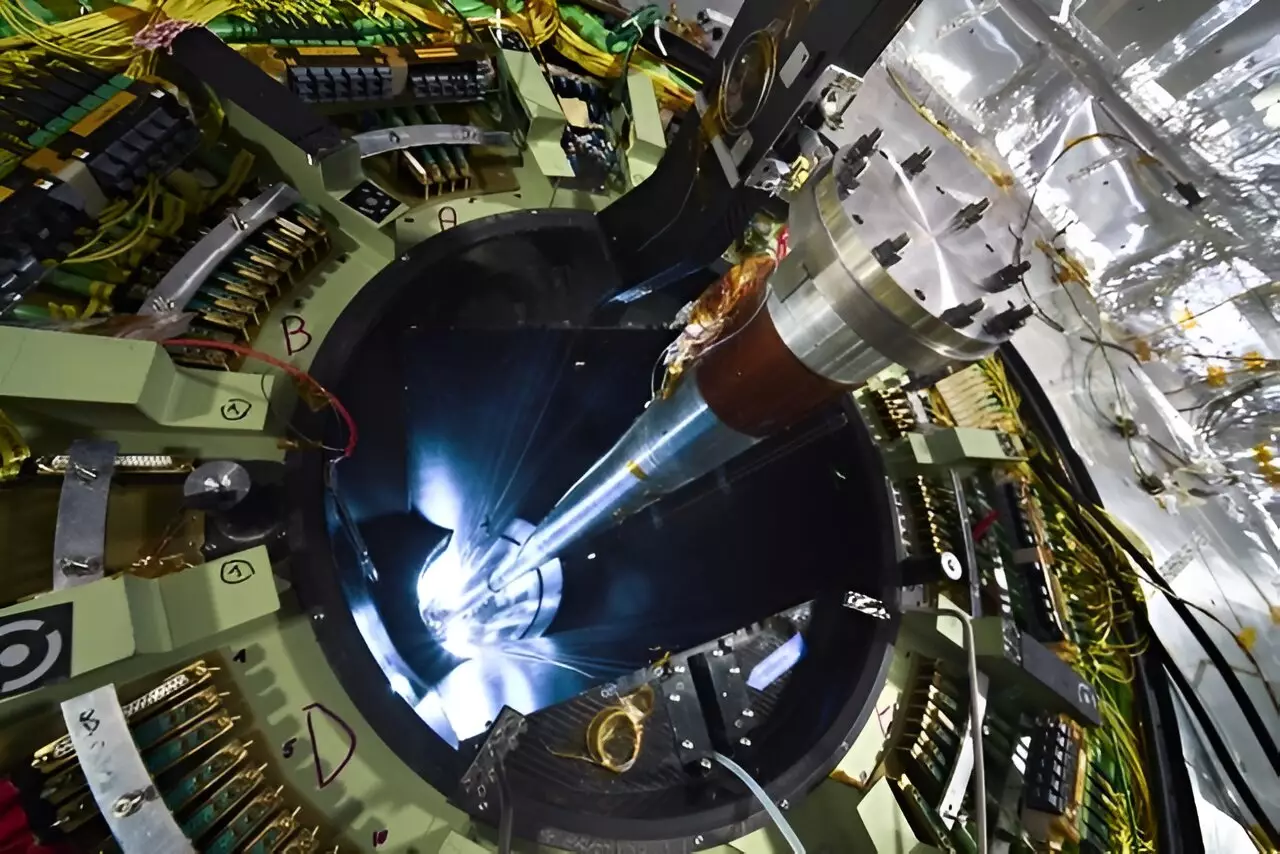In the captivating realm of particle physics, the prospect of magnetic monopoles has long tantalized researchers and enthusiasts alike. These hypothetical particles, characterized by possessing only a single magnetic pole—either north or south—defy our conventional understanding of magnetism, which traditionally requires both poles to exist simultaneously. This enchanting concept is not only a relic of theoretical discussions but a point of active inquiry that scientists have pursued for decades. Recent research utilizing an outdated beam pipe from the renowned Large Hadron Collider (LHC) has brought the scientific community closer to unraveling this enduring enigma.
A collaborative study spearheaded by the University of Nottingham and an international consortium has gained significant attention after publishing compelling results in Physical Review Letters. This study has provided the most stringent limitations on the existence of magnetic monopoles to date, establishing a new benchmark in the ongoing search for these elusive entities. The lead theorist Oliver Gould, a Dorothy Hodgkin Fellow at the University of Nottingham, articulated the fascination surrounding such particles, emphasizing that the mere possibility of isolated magnetic entities continues to perplex researchers—effectively positioning magnetic monopoles at the intersection of theoretical physics and experimental validation.
What sets this research apart is the novel use of a decommissioned beam pipe sourced from the LHC. Located near the collision point of ultra-high-energy ion interactions, this section of beryllium pipe had been exposed to the aftermath of countless particle collisions. The proximity to such high-energy events endowed the researchers with a unique opportunity to explore aspects of particle production that may facilitate the creation of magnetic monopoles. Ph.D. candidate Aditya Upreti noted that due to magnetic charge conservation, any resulting monopoles would be expected to become trapped within the material, making it feasible to identify them with sensitive devices.
The MoEDAL collaboration employed a superconductive magnetometer to probe the beam pipe for evidence of trapped magnetic charges. This non-invasive method holds significant promise and is a testament to the innovative approaches being developed to address complex questions in particle physics.
Although the researchers did not discover any magnetic monopoles during their examination, their work yielded vital implications. The results indicated that monopoles weighing less than 80 GeV/c² can be categorically ruled out, alongside establishing world-leading constraints on magnetic charges that span from two to 45 base units. Such constraints are pivotal as they refine our understanding of the conditions necessary for monopole production and indicate the energy thresholds required for detecting these elusive particles in future experiments.
Building on the findings from this experiment, which was based on data from LHC’s earlier runs, there is considerable optimism within the research community regarding the potential for future investigations. Oliver Gould articulated a clear vision for extending this groundwork into more recent experimental runs characterized by higher collision energies. By doing so, the team hopes to significantly enhance their experimental reach and possibly pave the way for discovering magnetic monopoles that have evaded detection until now.
The quest to find magnetic monopoles goes beyond mere academic curiosity; it has profound implications for our understanding of the universe. The validation of magnetic monopoles in any form could revolutionize theoretical frameworks and redefine the foundations of electromagnetic theory. As the scientific community continues to push the boundaries of particle physics, the investigations surrounding magnetic monopoles exemplify the intersection between cutting-edge research, innovative methodologies, and the timeless allure of unraveling the universe’s fundamental mysteries. With each passing study, the hope remains that one day, the existence of magnetic monopoles may shift from the theoretical stage to empirical reality, profoundly impacting our understanding of the symmetries that govern our universe.


Leave a Reply